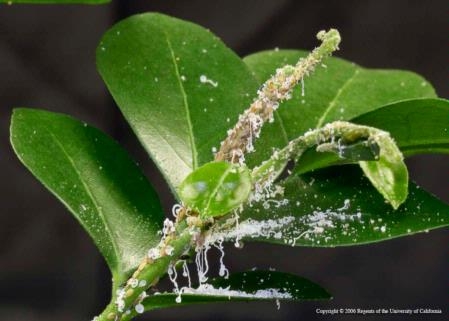Arroyo Grande psyllid has caused a big stir
They've established a quarantine zone within a five-mile radius of the ACP find and monitoring has been stepped up in the area. Officials are concerned because of the psyllid's ability to spread huanglongbing disease, should the disease make its way into California. (So far, only one backyard tree has been found in California infected with huanglongbing.)
“If you don't have a vector like a psyllid, no big deal, but when you have a vector alive and moving around, then you have a big problem,” said Beth Grafton-Cardwell, UC Cooperative Extension specialist in the Department of Entomology at UC Riverside.
The psyllid is established in some areas of Southern California and has been found in commercial orchards in the San Joaquin Valley, where an eradication plan is underway. In San Luis Obispo County, the main focus is on residential areas.
“It's so tiny that people don't even know they have it,” Grafton-Cardwell said. “It's very difficult to completely eradicate it because 60 percent of California [residences] have a citrus tree in their yard, so it can hop, skip, and jump.”
Comprehensive information about Asian citrus psyllid and huanglongbing disease is available on the UC ACP/HLB Distribution and Management website.

